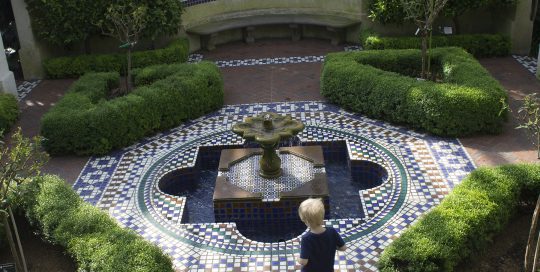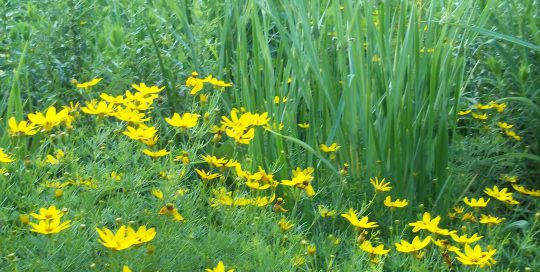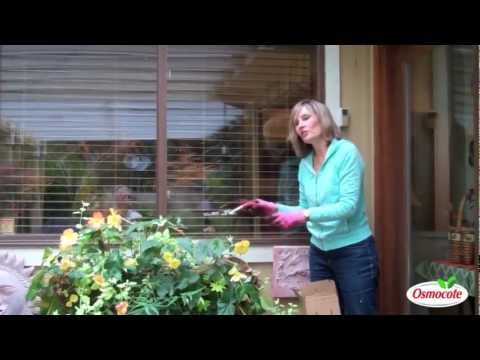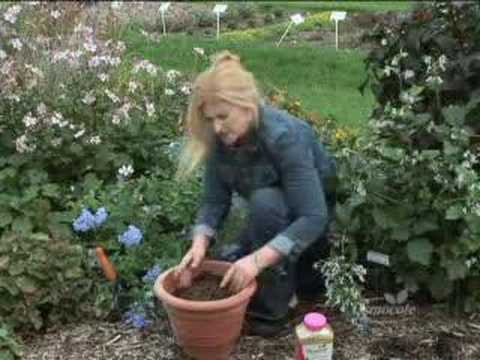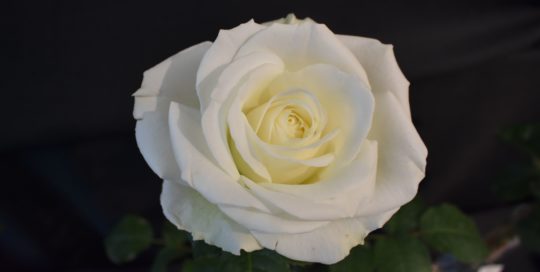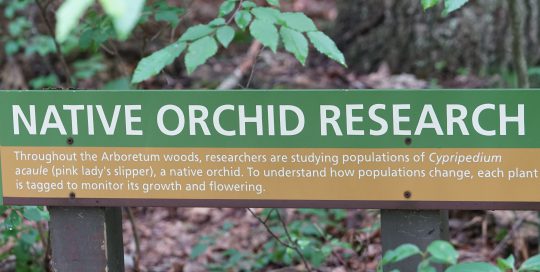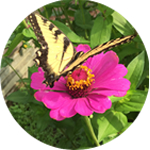PlantersPlace is pleased to initiate a series listing some of the best public gardens. Winter is an especially good time for a visit to a public garden because it can provide an out-of-season experience. Whether you are snowbound in the Midwest or just taking a winter’s break in a friendlier climate, why not schedule a visit to one of the public gardens featured in this article? In order of appearance, they are located in Lake Wales, FL, Phoenix, AZ and Grand Rapids, MI.
Bok Tower Gardens
This garden in Lake Wales, FL, is a National Historic Landmark, designed by Frederick Law Olmsted, Jr., and gifted to the public by founder Edward William Bok in 1929. Not only does it feature several formal themed gardens, Bok Tower Gardens is a designated site on the Great Florida Birding Trail. Hours and directions: Bok Tower Gardens is located 55 miles southwest of Orlando and 60 miles east of Tampa near Lake Wales, Florida, and is open every day of the year from 8 a.m. to 6 p.m., last admission at 5 p.m. The Visitor Center, Café and Gift Shop are open 9 a.m. to 5 p.m. Admission is $12 for adults and $3 for ages 5-12. They admit members and children under 5 for free.
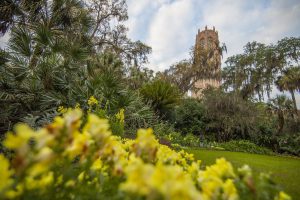
Special Gardens and Features:
The Singing Tower carillon concerts are at 1 & 3 p.m. daily with short selections played on the hour and half-hour. The carillon schedule features live concerts from mid-October through mid-May, Thursday to Sunday. You can hear concerts throughout the Gardens.
The Edible Garden and Outdoor Kitchen are two new features consisting of a fruit orchard, grape arbors, and raised beds for herbs and vegetables. It’s a perfect spot to gather inspiration for your own home garden. Additionally, the Outdoor Kitchen commands a 6,400 square feet space, complete with a wood fired brick oven, grill, cook top and range. With its center island countertop, it’s the ideal place for chef demonstrations.
Hammock Hollow Children’s Garden just opened last fall to great response. It’s nearly three acres of fun in the form of natural exploration. The perfect place for kids of all ages to climb on a larger-than-life indigo snake, crawl inside a tortoise burrow, and spider-walk along a humongous web. Furthermore, there are fountains, foggers and misters, an outdoor kitchen with kid-sized water pump, and fairy house trail all keep kids immersed in outdoor play and learning.
Trails: Visitors will discover four different Florida ecologies as they walk through a pine savanna, oak hammock, wetland prairie and bog. Also don’t forget the wildlife—including some of the 126 species of birds that can be seen throughout the year.
Pinewood Estate is a 20-room Mediterranean-style mansion built in the 1930s, and now open for tours throughout the year. Don’t miss the beautiful floral displays in each room from February 1 through March 31.
Early Spring Experience
From orchids and exotic irises to freshly green trees dripping with Spanish moss, the first three months of the year lead into Bok Tower Gardens’ peak bloom season. Azaleas and camellias steal the show, while Yellow Plume, Yesterday, Today & Tomorrow, Princess Flower, Tree Dahlia, Chinese Hat, Popcorn Senna, Gardenia, Jasmine and Brazilian Red Cloak join in the carnival of color. The weather is usually spectacular, with an occasional cold snap into the 40s, but most days are sunny and clear with temperatures in the 70s.
Creature comforts
Of course there are bathroom facilities, a gift shop and the Blue Palmetto Café, serving salads, soups, sandwiches and wraps, fruit and desserts as well as beer and wines. It is located next to the Visitor Center, and open daily from 9 a.m. to 5 p.m. Boxed lunches can be ordered for take-out or dine in.
Desert Botanical Garden, Phoenix, AZ, is located in the midst of the Sonoran Desert.
The site, comprised of 140 acres, is divided into thematic trails, each devoted to a different aspect of desert plantings. Desert Botanical Garden is at 1201 N. Galvin Parkway, Phoenix, AZ 85008, and is open daily from 8 a.m. to 8 p.m. (Mountain Time). For more information, call (480) 941-1225 or email contact@dbg.org. Admission is $24.95 for adults and $12.95 for ages 3-17.
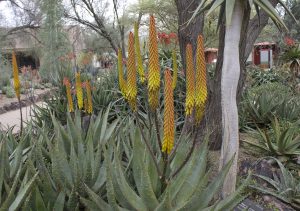
Special Gardens and Features
Desert Discovery Loop Trail connects all of the trails from the center of the gardens, and gives an overview of the Cactus and Succulent Galleries and Agave Yucca Forest. At the center is the Patio Café, with well-spaced tables and chairs for a relaxing view of the Gambel’s Quails as they cavort around the plantings.
Plants & People of the Sonoran Desert Loop Trail is designed as a living replica that characterizes Native tribes that have, and still live, within 100 miles of the Phoenix basin. Visitors can also experience saguaro fruit harvesting and yucca paint brush making, cholla bud roasting and agave cultivation.
Sonoran Desert Nature Loop Trail leads to the most perfect vistas in the gardens. At just under a quarter of a mile, the trail is typically quiet. Its wide pathway leads to views of distant mountains and close-up observations of native flora and fauna. Additionally, the Center for Desert Living Trail consists of edible and herb gardens, a sundial planted with an array of colorful cactus, and the Archer House, which is landscaped with plants that can be grown in your own desert gardens.
Harriet K. Maxwell Desert Wildflower Loop Trail is one of the most colorful, with separate plantings devoted to bees, butterflies and hummingbirds.
Creature comforts
Two restaurants are available for anything from a snack to a full meal. Gertrude’s Restaurant shares space with the garden shop, and features a wide array of meals prepared with local ingredients. Hours are from 10:30 a.m. – 9 p.m. Monday – Friday, and from 8 a.m. – 9 p.m. Saturday and Sunday. The Garden Patio Café also offers salads and sandwiches and is open from 8 a.m. – 4 p.m. daily, October-May.
Early Spring Experience
It’s hard to miss the Aloes, many of which are in full bloom by mid-February. Among the many other plants in bloom from desert climates throughout the world are fairy dusters (Calliandra eriophylla), Texas mountain laurel (Dermatophyllum secundiflorum), Silk floss tree (Ceiba speciosa), and spotted emu bush (Eremophila maculata) as well.
Frederik Meijer Gardens & Sculpture Park, Grand Rapids, MI, is worth a visit, even in winter.
The 158-acre campus is located at 1000 East Beltline Ave NE, and features a five-story, 15,000 square-foot tropical conservatory. The Frederik Meijer Gardens & Sculpture Park campus is open from 9 a.m. to 5 p.m. Monday through Saturday; from 11 a.m. to 5 p.m. Sundays. Admission is $14.50 for adults, $7 for children age 5-13 and $4 for children from 3-4. For more information, call (888) 957-1580 or email info@meijergardens.org.
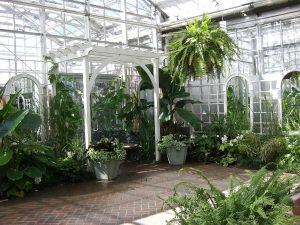
Special Gardens and Features
The Lena Meijer Tropical Conservatory: The five-story Tropical Conservatory is the largest of its kind in Michigan, with tranquil waterfalls and streams winding around lush vegetation. Take a world tour of the tropics, and see the huge array of plants, including edibles like chocolate trees, coconut palms and citrus. Blooming doesn’t stop when the cold weather outside begins.
Earl and Donnalee Holton Victorian Garden Parlor provides a beautiful welcome into the conservatory. Visitors will spend time acclimating themselves to another era; to a time of potted tropicals like dutchman’s pipe vine, staghorn fern, and blooming citrus and Begonias. Also on display is a Wardian case, the Victorian era precursor to the terrarium that made transporting plants from the tropics on ships much more successful.
Kenneth E. Nelson Carnivorous Plant House is fun for all ages. From Venus fly traps to adorable butterworts, the Carnivorous Plant House is home to the carnivores of the plant world.
Other Exhibits
Leonard and Dora Rosenzweig Orchid Wall displays a constant supply of blooming orchids from the conservatory’s collection, which consists of 3,500 plants. There is also the Orchid Show and Sale that takes place Jan. 27 and 28, 2018. On Saturday, Jan. 27, the displays run from noon to 5 p.m. with orchids for sale from 10 a.m. to 5 p.m. The orchid display and sales run from 11 a.m. to 5 p.m. on Sunday, Jan. 28.
In March and April, the conservatory is home to the largest tropical butterfly exhibition in the nation. Thousands of butterflies, imported as chrysalises from Africa, Asia and South and Central America, fly freely within the conservatory.
Also, Earl and Donnalee Holton Arid Garden welcomes lovers of the hot and dry, with an array of cacti, succulents and other desert plants from around the world. There are two sections—one with plants from the Americas and Australia, and the other housing plants found in Africa, Asia and the Middle East. It’s amazing to see plants from the other side of the world thriving and even blooming in the wintery Midwest.
Inside/Outside
An Interactive Sculpture Experience for Families is a four-season exhibit consisting of eight hands-on, educational stations, designed to encourage children to experience art in an interactive way. The exhibit will remain open until a new one replaces it in the upcoming Covenant Learning Center*.
*The new LEED-certified Covenant Learning Center is a 20,000 square foot space designed to promote interactive learning, foster creative thinking, integrate technology, and support a wide range of educational offerings. They have scheduled it for completion by the end of 2018.

